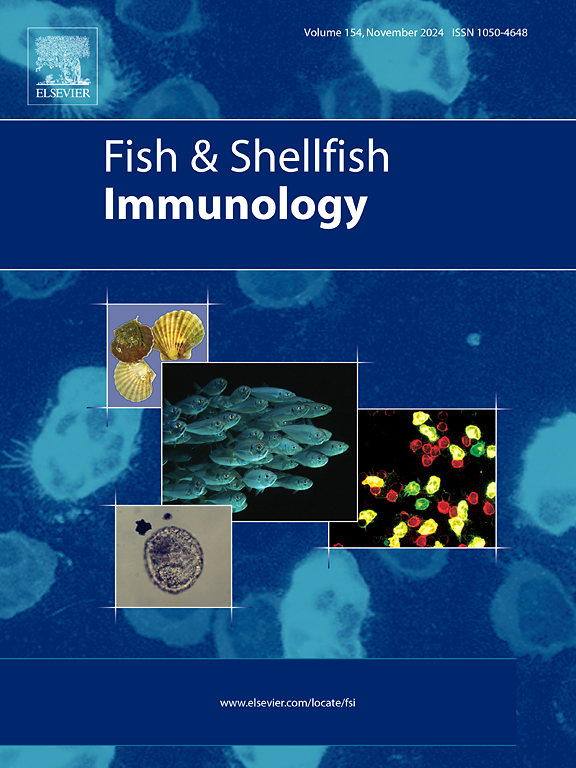Molecular characterization and functional analysis of ZAP-like gene in common carp (Cyprinus carpio)
IF 4.1
2区 农林科学
Q1 FISHERIES
引用次数: 0
Abstract
The zinc finger antiviral protein (ZAP) is a host antiviral factor that could restrict the replication of various RNA and DNA viruses. To date, the antiviral properties of ZAP gene have been demonstrated in multiple mammals and a few of bird species, while no data is available regarding the immune role of ZAP in fish. In this study, one ZAP-like gene (CcZAPL) was identified form common carp and its antiviral role was investigated. Expression analysis showed that CcZAPL was widely expressed in multiple fish tissues, with highest level in the head kidney, and confocal microscopy analysis showed the sublocation of CcZAPL mainly in the nucleus of Epithelioma papulosum cyprini (EPC) cells. After in vivo stimulation by Spring viraemia of carp virus (SVCV), CcZAPL was induced in gene expression, and in EPC cells overexpression of CcZAPL led to significantly decreased virus load of SVCV and diminished cytopathic effect (CPE). Moreover, after SVCV infection in vitro, expressions of cytokines including IFN, ISG15, PKR, Mx and TNF-α were observed to be up-regulated in CcZAPL-overexpressed EPC cells. Our findings indicated that CcZAPL played a positive role in the control of SVCV, which will allow us to gain new insights into the immune role of ZAP in fish antiviral immunity.
鲤鱼 ZAP 类基因的分子特征和功能分析
锌指抗病毒蛋白(ZAP)是一种宿主抗病毒因子,可限制各种 RNA 和 DNA 病毒的复制。迄今为止,ZAP 基因的抗病毒特性已在多种哺乳动物和少数鸟类物种中得到证实,而关于 ZAP 在鱼类中的免疫作用尚无数据。本研究鉴定了鲤鱼的一个 ZAP 类基因(CcZAPL),并研究了其抗病毒作用。表达分析表明,CcZAPL在鱼类多种组织中广泛表达,其中在头肾中的表达水平最高,共聚焦显微镜分析表明,CcZAPL主要亚定位在上皮乳头状瘤细胞(EPC)的细胞核中。鲤春病毒(SVCV)体内刺激后,CcZAPL基因表达被诱导,在EPC细胞中过表达CcZAPL可显著降低SVCV的病毒载量和细胞病理效应(CPE)。此外,体外感染 SVCV 后,在 CcZAPL 表达的 EPC 细胞中观察到 IFN、ISG15、PKR、Mx 和 TNF-α 等细胞因子的表达上调。我们的研究结果表明,CcZAPL在控制SVCV中发挥了积极作用,这将使我们对ZAP在鱼类抗病毒免疫中的作用有新的认识。
本文章由计算机程序翻译,如有差异,请以英文原文为准。
求助全文
约1分钟内获得全文
求助全文
来源期刊

Fish & shellfish immunology
农林科学-海洋与淡水生物学
CiteScore
7.50
自引率
19.10%
发文量
750
审稿时长
68 days
期刊介绍:
Fish and Shellfish Immunology rapidly publishes high-quality, peer-refereed contributions in the expanding fields of fish and shellfish immunology. It presents studies on the basic mechanisms of both the specific and non-specific defense systems, the cells, tissues, and humoral factors involved, their dependence on environmental and intrinsic factors, response to pathogens, response to vaccination, and applied studies on the development of specific vaccines for use in the aquaculture industry.
 求助内容:
求助内容: 应助结果提醒方式:
应助结果提醒方式:


